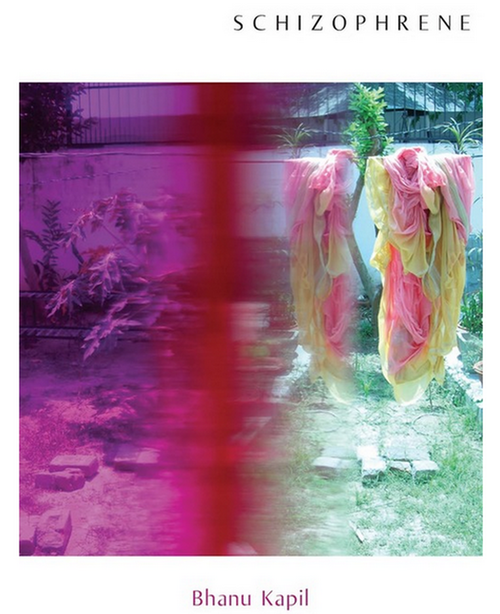
In honor of the publication of Bhanu Kapil’s newest book Ban en Banlieue, just published by Nightboat Books, the writers Amina Cain, Douglas A. Martin, Sofia Samatar, Kate Zambreno, and Jenny Zhang gathered together in a conversation to talk about the work of the British-Punjabi writer, who teaches in the Department of Writing and Poetics at Naropa University. The conversation will be published in three parts.
Day 1: Encounters
AMINA CAIN: The first book I read by Bhanu Kapil was Incubation: A Space for Monsters, which a friend lent me because she thought I’d like it. I did; actually, I loved it. In it, Laloo—Bhanu’s red cyborg girl—travels across America toward the future.
From the book: “When I was born, they did not know whether to wrap me in a pink blanket or a green one. Was I born cyborg or something else, something more toward a human being with its job opportunities and ways of loving across gender?”. I had never read anything like Incubation, with its preface “to reverse the book” and its “notes against.”
JENNY ZHANG: My first Bhanu was a chapbook from the Belladonna* chaplet series, “From The Wolf Girls of Midnapure,” a sort of precursor to the full length book, Humanimal, which I read immediately after. I raced through both of the books. They made me feel feral and illiterate in all the ways that help and none of the ways that hinder. For the first time in my reading life, I wanted to use the term “hybrid,” as fuzzy and undefined as it is. “From The Wolf Girls of Midnapure” tells the story of Kamala and Amala, who were supposedly two feral girls raised by wolves and found and brought back to civilization by the rector of a local orphanage in Bengal, India. The chapbook opens with transliterated Bengali, something that immediately felt both alien and recognizable, maybe because Bhanu has a way of speaking to those of us who move through life feeling at once alien and recognizable, she speaks to us–the cyborgs, the aliens, the displaced, the feral, the untamed.
DOUGLAS A. MARTIN: The first one I read was Incubation, that was like entering a breathing painting, panting and seething and sweating love. You know that scene in Godard’s Bande à part, where they run through the Louvre? She walks slowly through, with a considered body language, hands maybe folded behind back, chin leading, until she takes down what catches her eye. She doesn’t cut out the particular element or detail, but rather crumples the canvas back down...
You have reached your article limit
Sign up for a digital subscription and continue reading all new issues, plus our entire archives, for just $1.50/month.
Already a subscriber? Sign in




